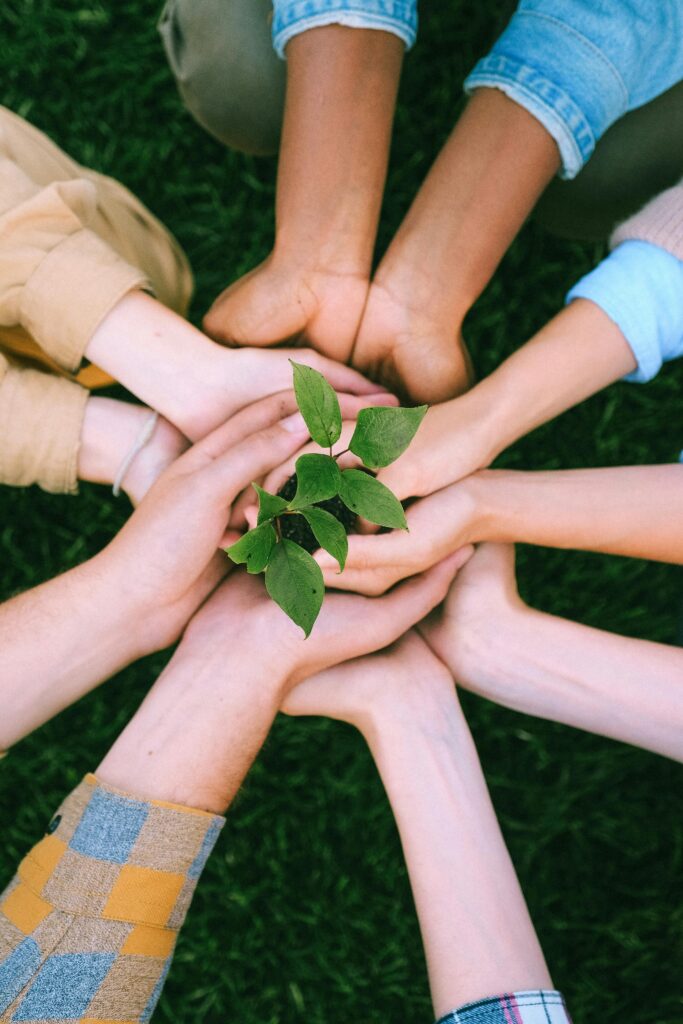cosmetic packaging
Discover how eco-friendly cosmetic packaging solves waste, cuts cost, and leads the beauty industry toward sustainability.
The cosmetics industry produces billions of packages each year — bottles, jars, tubes, boxes — many made of single-use plastics that end up in landfills. Consumers are becoming more eco-conscious, and beauty brands are under pressure to choose environmentally friendly cosmetic packaging.
This article explores the problems with conventional cosmetic packaging, practical eco-friendly solutions, the latest sustainability trends, and how choosing the right sustainable packaging materials can reduce costs while improving brand value.

The Problems of Conventional Cosmetic Packaging
Traditional cosmetic packaging is often made from plastic, metalized films, or mixed materials that are difficult to recycle.
Common issues include:
Low recyclability: Many cosmetic containers combine plastic, metal, and glass layers, which recycling plants cannot easily separate.
High carbon footprint: Virgin plastic and aluminum require large amounts of fossil fuel energy.
Waste generation: Billions of used containers are discarded yearly, polluting oceans and landfills.
Brand risk: Modern consumers expect sustainable packaging; failing to adapt can damage brand trust.

Solutions: How Eco-Friendly Packaging Solves These Problems
Switching to sustainable cosmetic packaging starts with smarter material and design choices.
Key strategies include:
Use recyclable materials: Glass, aluminum, and PET plastic can be recycled multiple times.
Adopt PCR (post-consumer recycled) plastic: Reduces virgin plastic use while maintaining performance.
Choose biodegradable or compostable options: PLA (corn-based bioplastic) and sugarcane-derived Bio-PE help lower carbon emissions.
Switch to paperboard or molded pulp: Ideal for secondary packaging like boxes and trays — renewable and fully recyclable.
Incorporate bamboo or wood elements: Great for caps, jars, and premium eco aesthetics.
Design for refillability: Reusable containers with refill pods or sachets cut waste dramatically.
Simplify packaging design: Fewer materials mean easier recycling and lower production costs.
Example: L’Oréal’s refillable skincare jars cut packaging waste by 70%. Smaller beauty brands now follow this path with paper tubes and bamboo lids.
Sustainable Cosmetic Packaging Materials and Fabrics
Let’s look at the most common eco-friendly materials used in cosmetic packaging and their advantages:
| Material | Description | Key Benefits |
|---|---|---|
| Glass | Recyclable, non-reactive, durable — used for bottles and jars. | Luxurious look, reusable, 100% recyclable. |
| Aluminum | Lightweight metal providing excellent barrier protection. | Infinitely recyclable, durable, premium finish. |
| PCR Plastic (Recycled PET/PP) | Made from post-consumer recycled waste streams. | Cuts virgin plastic use, reduces emissions by up to 80%. |
| Bioplastics (PLA, Bio-PE) | Derived from renewable feedstocks like corn or sugarcane. | Renewable, lower carbon footprint, compostable options. |
| Paperboard / Molded Pulp | Made from recycled fibers; great for boxes or trays. | Compostable, recyclable, lightweight, affordable. |
| Bamboo / Wood | Natural materials used for caps, boxes, and accents. | Renewable, biodegradable, premium eco look. |
| Seaweed & Plant-Fiber Composites | Emerging biodegradable materials using algae or crop waste. | Innovative, renewable, strong sustainability appeal. |
| Fabric & Coatings | Plant-based coatings or minimal laminations for finishes. | Improves recyclability, reduces microplastics. |
| Combined Systems | Hybrid options like paper + bio liner for improved performance. | Keeps product safe, eco-efficient, recyclable. |
Tip: Combine materials strategically — for example, use a paper tube with a biodegradable liner, or a bamboo cap on a glass jar. Your packaging remains functional while staying eco-friendly.

Cost-Effectiveness: Eco Packaging vs Traditional Packaging
A common concern is that sustainable packaging is expensive — but the reality is more nuanced.
| Comparison Aspect | Conventional Packaging | Sustainable Packaging | Cost-Effectiveness Notes |
|---|---|---|---|
| Material Cost | Lower initial cost, mainly petroleum-based plastics. | Slightly higher upfront cost (e.g., glass, paperboard, bioplastic). | Higher initial price but reduced long-term environmental and disposal costs. |
| Production Energy | High energy demand due to fossil fuel extraction and polymerization. | Uses recycled or renewable materials, lowering energy use over time. | Energy-efficient production lowers lifecycle expenses. |
| Transportation | Lightweight but often non-recyclable; adds waste management costs. | Some materials heavier (glass), but recycled paper options are lightweight. | Optimized designs offset extra shipping costs through recyclability. |
| Brand Value Impact | Low sustainability appeal, minimal brand differentiation. | Enhances brand reputation and consumer loyalty. | Generates higher customer retention and perceived value. |
| Waste Management | Non-recyclable materials increase landfill and waste costs. | Recyclable or compostable materials reduce waste costs. | Saves on waste disposal and supports circular economy incentives. |
| Environmental Impact | High CO₂ emissions, pollution, and long decomposition time. | Reduces emissions, conserves resources, biodegrades faster. | Long-term sustainability lowers carbon taxes and environmental fees. |
| Consumer Demand | Declining interest from eco-conscious consumers. | Growing demand and premium market acceptance. | Sustainability increases sales potential and market competitiveness. |
Long-term benefits:
Reduced waste disposal cost
Better brand perception and higher sales margins
Compliance with future packaging regulations
Potential tax incentives for using recycled materials
As production scales and technology improves, eco-friendly packaging becomes increasingly cost-effective — especially when factoring in marketing value and consumer loyalty.



Types of Cosmetic Packaging and Suitable Eco-Friendly Materials
Cosmetic packaging can be divided into three main categories: makeup packaging, skincare packaging, and toiletries packaging. Each category has its own material needs, depending on protection, presentation, and sustainability goals.
Makeup Packaging
Makeup packaging usually includes eyeshadow boxes, lipstick boxes, and foundation boxes. These products require compact, durable, and visually appealing packaging.
Recommended eco-materials:
Cardboard and gray board: sturdy, printable, and easy to shape for small boxes.

Kraft paper: ideal for a natural and minimalist aesthetic.

Recycled pulp and molded paper trays: protect delicate items like pressed powder or blush without plastic inserts.

➡ Example: A lipstick box made from kraft paper with soy-based ink highlights a brand’s eco-friendly identity while reducing plastic use.

Skincare Packaging
Skincare packaging includes mask boxes, body lotion boxes, cream boxes, and care tool boxes. These products often require moisture resistance and protective strength.
Recommended eco-materials:
Gray board or honeycomb board: provides thickness and durability for heavier jars or bottles.

Paperboard with plant-based coating: resists moisture and maintains recyclability.

Bamboo or mycelium inserts: naturally cradle glass jars or bottles, replacing foam or plastic molds.

Example: A facial cream box using honeycomb board inserts reduces material weight while keeping glass jars secure during transport.

Toiletries Packaging
Toiletries include shampoo packaging, conditioner packaging, essential oil packaging, perfume packaging, and aromatherapy packaging. These are often liquid-based products needing both protection and sustainability.
Kraft paper and recycled gray board for outer boxes.

Molded pulp trays or paper tubes for compact products like solid shampoo bars or perfume bottles.

Seaweed paper and mycelium for innovative, biodegradable inner linings that replace plastics.

Example: A perfume box lined with mycelium material not only adds natural texture but also decomposes harmlessly after use.

Emerging Sustainable Materials for Cosmetic Packaging
In addition to traditional eco-friendly paper materials like cardboard, gray board, honeycomb board, kraft paper, and recycled pulp, more innovative sustainable materials are appearing in the cosmetics industry.
| New Material | Source | Ideal Application | Eco Benefit |
|---|
| Coffee Grounds Paper | Upcycled coffee waste | Box covers, sleeves, tags | Reuses organic waste, adds unique aroma |

| New Material | Source | Ideal Application | Eco Benefit |
|---|
| Seed Paper | Plantable recycled paper | Gift boxes, promotional inserts | Can be planted after use; zero waste |

| New Material | Source | Ideal Application | Eco Benefit |
|---|
| Pineapple Leaf Paper | Agricultural by-product | Premium skincare boxes | Biodegradable, soft natural texture aroma |

| New Material | Source | Ideal Application | Eco Benefit |
|---|
| Tea Residue Paper | Tea waste fibers | Outer packaging and cards | Reduces landfill waste, natural color tone |

| New Material | Source | Ideal Application | Eco Benefit |
|---|
| Mycelium | Mushroom root network | Inner support trays, box fillers | Fully compostable, shock-resistant |
材料做包装见过吗?环保天花板_7_现象创意包装设计_来自小红书网页版-1024x1024.jpg)
| New Material | Source | Ideal Application | Eco Benefit |
|---|
| Seaweed Paper | Algae-based fibers | Wrapping paper, inserts | Marine-safe, rapidly renewable |

These new materials are reshaping how brands express eco-luxury. They not only reduce plastic pollution but also communicate brand values through natural textures, sustainable sourcing, and storytelling potential.
Impact on the Cosmetics Industry
Eco-friendly packaging is reshaping how the cosmetics industry operates:
Competitive advantage: Sustainable brands attract Gen Z and millennial consumers who value ethical choices.
Regulatory readiness: Many regions are banning single-use plastics and taxing non-recyclable packaging.
Brand storytelling: Packaging becomes part of a brand’s sustainability narrative.
Partnership opportunity: Working with an eco-friendly packaging manufacturer helps brands innovate and reduce waste.
Circular economy progress: More refill stations, return programs, and recycling loops.
Case example: A luxury skincare brand switched to 90% recycled glass bottles and achieved a 60% reduction in packaging emissions while maintaining a premium look.

Sustainable cosmetic packaging is no longer a niche — it’s the future of beauty. From recyclable glass and bamboo to bioplastics and molded pulp, brands have more options than ever to reduce waste, lower costs, and strengthen their environmental image.
At our factory, we specialize in eco-friendly paper and biodegradable packaging solutions designed for the cosmetics, skincare, and beauty industry. By choosing sustainable materials today, your brand invests not only in the planet but also in long-term customer trust.
If you want to know more about brand packaging customization solutions, please contact us, we have professional packaging designers for you to design packaging solutions for free!
You don't know how to start customizing?
Check Here



We Love to Hear From You
You can write down your detailed requirements in the message, for example, style, material, size, quantity, printing requirements, etc. You can also leave accurate contact information, we will contact you within 24 hours!
Leave A Message

